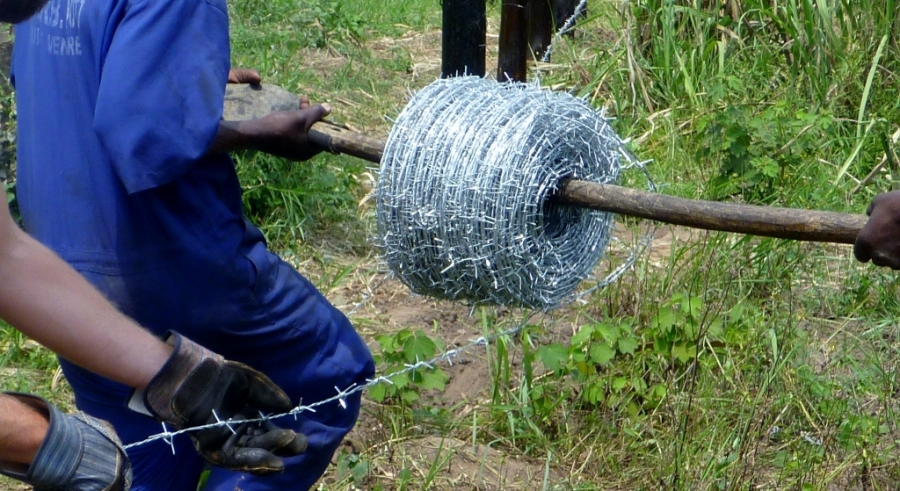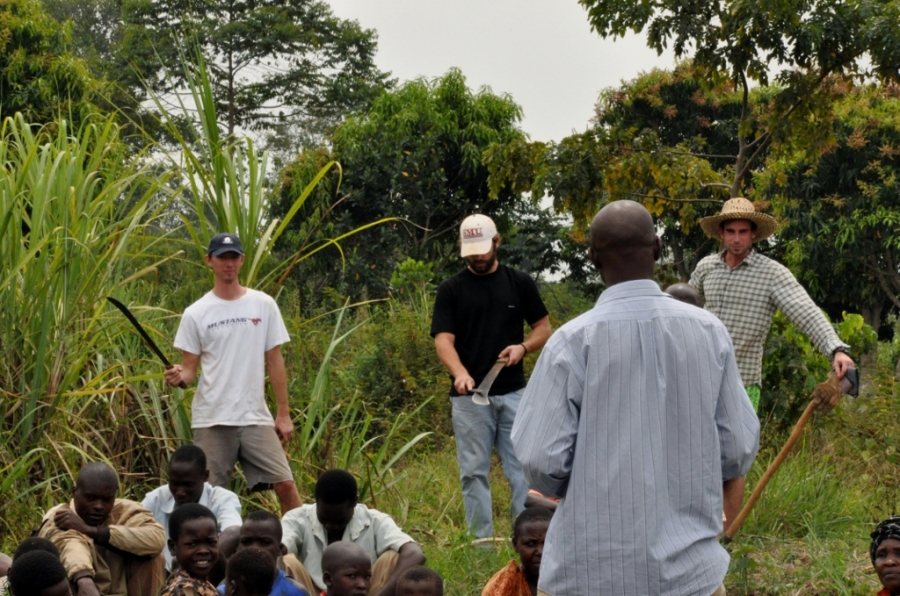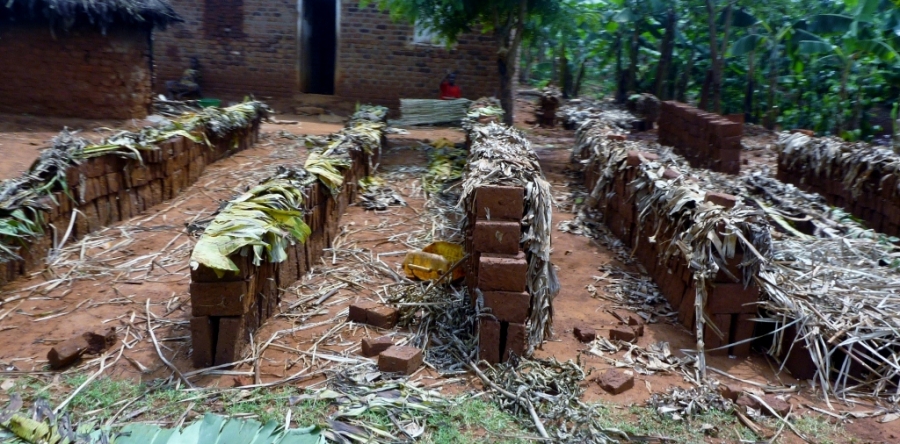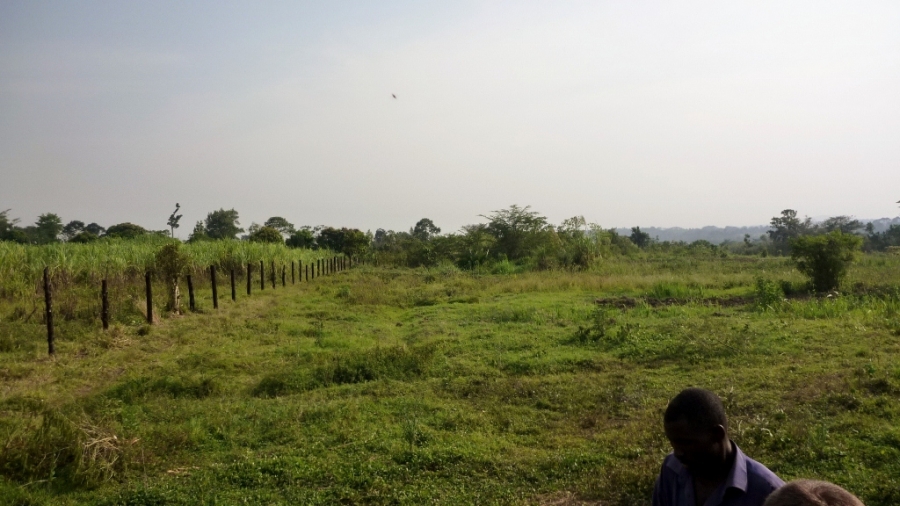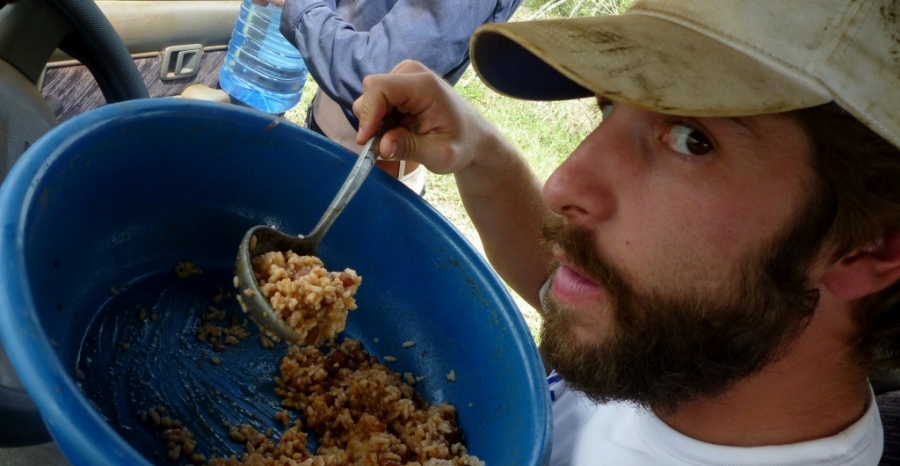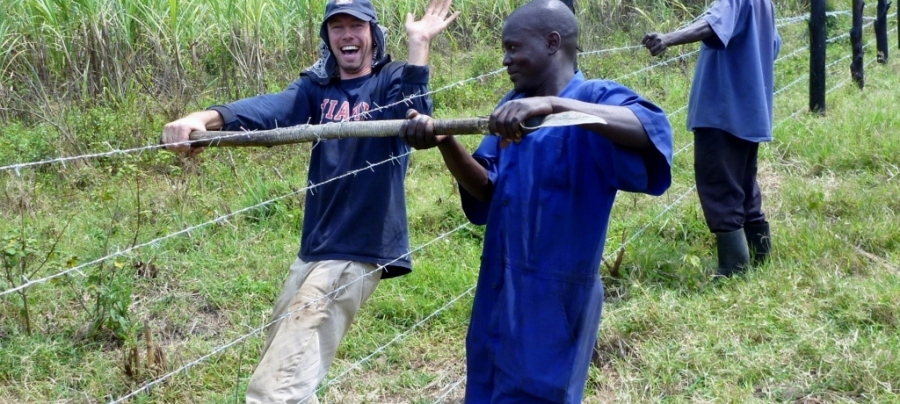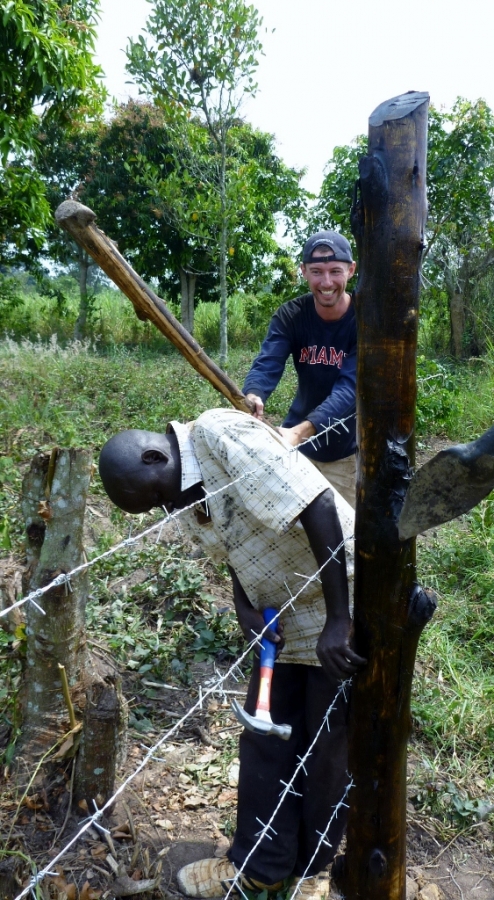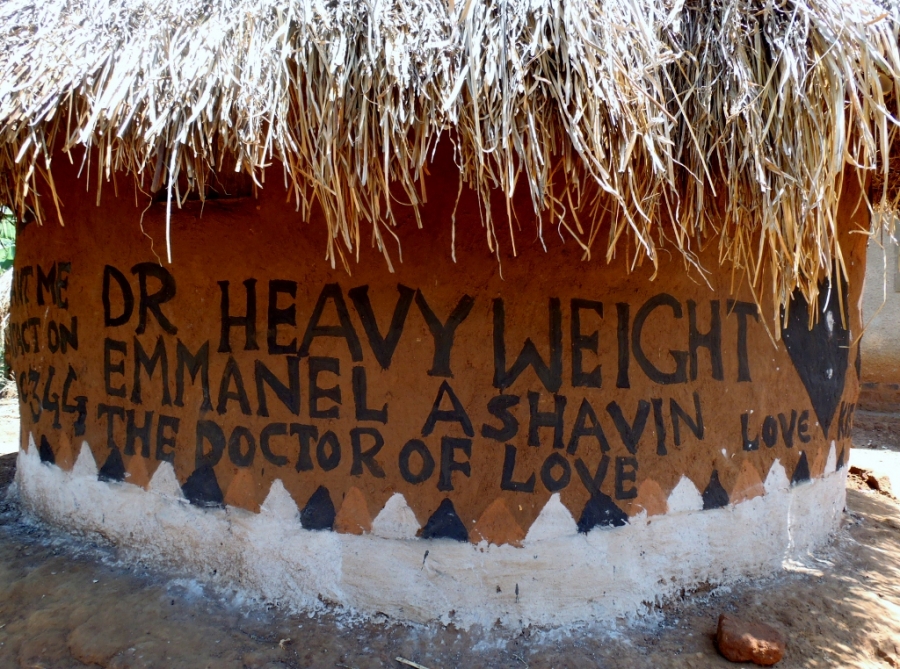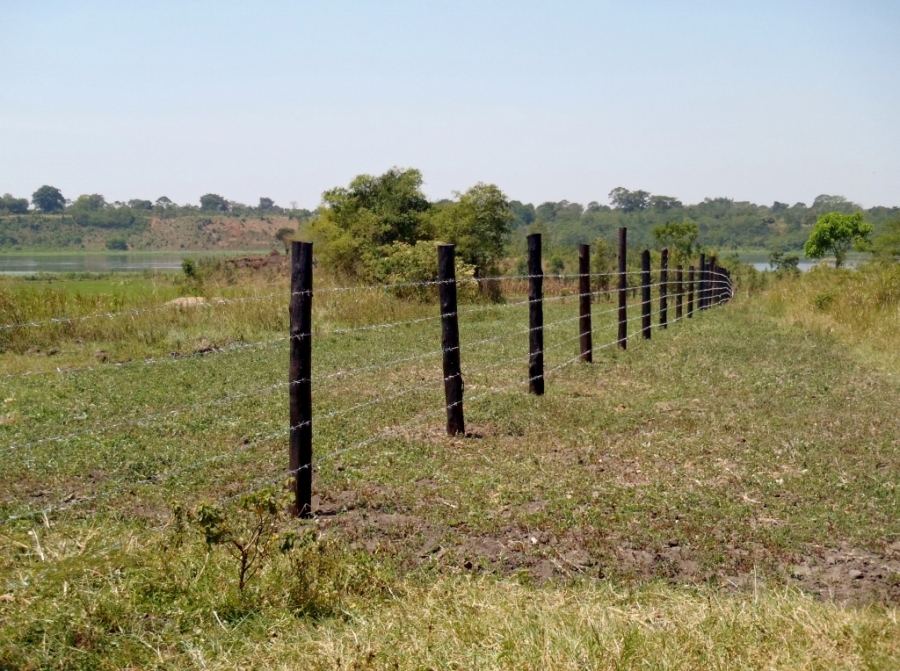The last two weeks, Chris, James, and I have been digging 150 post holes to drop in and pack 7 foot poles then run 5 strands of barb wire around them all. We had 2 local men, hoes, spears, and loads of hot drinking water. The land is owned by the UAPO and will be the site of a Vocational Center for the local community. It sits directly on the eastern bank of the Nile River. The locals farm the land while they watch tourist float past in rafts and kayaks heading North on the river.
With the sun beating down, warm water was our only escape as well as rice and beans for lunch. That dreadful combination is the staple meal here. I asked the ladies working at the house that if they eat rice and beans for lunch, what will they eat for dinner. “Beans and Matoke banana,” they replied. Uganda probably won’t be a stop in someone’s “round-the-world gastronomy tour” anytime soon.
The first day on the job, we began to dig holes as they were marked every 10 feet apart. We had about 30 hole finished then an insurgent group of older women came chanting and yelling at us tell us to leave their land. Our Uganda counterparts came soon afterword to dispute who owned the land. We were in the right, but you can see in the pictures that we were holding our knives close, ready to slice and dice at a moment’s notice.
After 2.5 days, 145 holes were dug then the poles came covered in a slimy black oil to protect the wood and ruin any article of clothing they touched. My pants and shirt were finished after this stuff got onto it. Once the poles go into the ground, you have to pack 1 inch stone and dirt together using a blunt pole. Combine the intense heat from the sun for 3 entire days and you have a sore body and about 10 blisters per hand. Awful. This job made me think of mixing concrete at Mai Dive for the seawall, except worse. For sure, the toughest job of my life. Thankfully the local boys came down to help us out a bit digging holes and running tools back and forth.
Finally in the last couple of days, we strung the barb wire and could rest a little more during the day. Now the fence is finished and construction on the building can begin in March 2011.
The village we were near was home a huge number of brick makers. They dug the red soil and put the moist clay into a two brick mold, stacked, then fired the bricks. The kiln was a complete stack of bricks with the only openings at the bottom, large enough for tree trunks to slowly burn and the outside of the kiln was coated in clay slip/sludge. The bricks on the inside of the stack are stronger because they get extremely hot while the ones on the outside are more brittle because of the lack of heat during the firing. On Tuesday, I am going to meet with one or two potters in a neighboring village.
